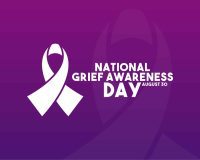
Virtual Reality is no longer relegated to futuristic Sci-Fi. It’s found its place not only in the medical field but a growing number of hospices as well. Virtual reality (VR) simulations are being used to aid nurses, students, and hospice workers in learning about and empathizing with patients who are nearing the end of life. These simulations are often called “empathy machines” and allow workers or students to experience difficult diagnoses that many of their patients face.
The benefits hospice patients can experience with VR include pain relief, “virtual last wishes”, and the ability to make the patients feel connected with others again at a time in their lives when their physical abilities are diminishing and they experience feelings of isolation. One of the benefits of using VR is that it can be performed in a patient’s home, nursing facility, hospice inpatient facility, or acute care hospital—basically anywhere and by anyone as long as they are physically able to handle the equipment. They don’t have to be ambulatory; they can have these experiences laying in their beds or sitting in a chair. Most patients can use the equipment with little difficulty.
“It’s so vitally important that people not fear hospice but understand hospice,” says Daryl Cady, CEO of Hospice of Southern Maine. “Virtual reality is appealing to the next generation. And if they take 30 minutes and put on the goggles and run through it and have even just a little sense of an understanding, just think of the change we might be able to make.”
Pain is one of the top concerns for hospice patients, their families, and caregivers. Being able to relieve that pain when comforting patients near the end of life is a universal goal. VR can do this by significantly lessening pain in patients as well as reducing anxiety and stress, thereby lowering blood pressure and restlessness.
VR use with hospice patients can also allow for virtual “last wishes”. The patient can “go” places. This has great appeal to hospice patients because, near the end of life, a person may feel dismayed or remorse over the things they haven’t had a chance to do, experiences they haven’t had, or places they haven’t been able to visit. With VR technology, hospice patients get a chance to visit a far-away place, perform a wish-list feat such as cliff diving, or even re-visit a place that has special memories for them.
A pilot program at the Royal Trinity Hospice in London included a dying woman and her husband who re-visited Venice where they had gotten engaged. Another woman walked the beaches of the Maldives and a third returned to Jerusalem, the city where she grew up.
Perhaps one of the most profound impacts VR can have on a hospice patient is how it can help lessen their feelings of isolation by being able to bring the patient out of their bed and more in connection with their world and the people in it. For instance, VR allows those who are unable to physically attend ceremonies and trips and yet still be a part of them. VR headsets can be configured to transmit the same imagery between two viewers, enabling shared experiences between a patient and their loved one, caregiver, or another party.
Hospice Savannah is only one of several hospice organizations to use VR as a way to help patients and their families relieve stress and feelings of isolation during their hospice care. VR has also proven essentially beneficial during this time of a pandemic. They worked with the Savannah College of Art and Design (SCAD) to create a VR program that has had positive impacts on patients and students.
In collaboration with SCAD virtual reality professor Teri Yarbrow, Hospice of Savannah developed the VR for Good project as a virtual reality program for patients featuring three different interactive experiences—a hot air balloon ride, an undersea adventure, and a farm visit—that can be used for physical and emotional therapy. The hospice’s president and CEO Kathleen Benton spearheaded a community-based collaboration to bring VR experiences to patients and families after witnessing firsthand the impacts that virtual reality can have in alleviating suffering.
“I see VR as promising for the future as we build a library of experiences,” said Yarbrow. “Some are more engaging and some more meditative and life-enhancing. ‘Apples and AntHills’ [virtual farm visit] is one that involves motor exercises, but there are all different kinds of ways that you could incorporate that at a level patients are able to do. ‘Nalu’ is directed towards pain relief as very passive. You can move your hands and see bubbles around them, or look at whales, dolphins, and turtles. The ‘Swimming with the Dolphins’ experience allows the patient to be a diver and facilitates swimming. You can hear the dolphins around you, you’re moving and there’s soothing music. A palliative care patient having pain came in and he watched this experience four times in a row with a gigantic smile on his face when he was done. It totally shifted whatever was going on in this perception of his pain.”
The use of this technology for students and medical professionals helps develop empathy and a deeper understanding of what patients are experiencing. “It’s so vitally important that people not fear hospice but understand hospice,” Cady of Hospice of Southern Maine said. “Virtual reality is appealing to the next generation. And if they take 30 minutes and put on the goggles and run through it and have even just a little sense of an understanding, just think of the change we might be able to make.”
One nursing student said that experiencing herself as patient Clay Crowder from one of the latest simulations of a fictional 66-year-old man with incurable lung cancer in his last moments before dying, made her think more about what dying patients might comprehend as they’re slipping away.
“I think it will help us become more empathetic with our patients,” she said. “Being able to experience the virtual reality kind of gives us an idea of what they might be going through and the frustration that comes along with it.”




